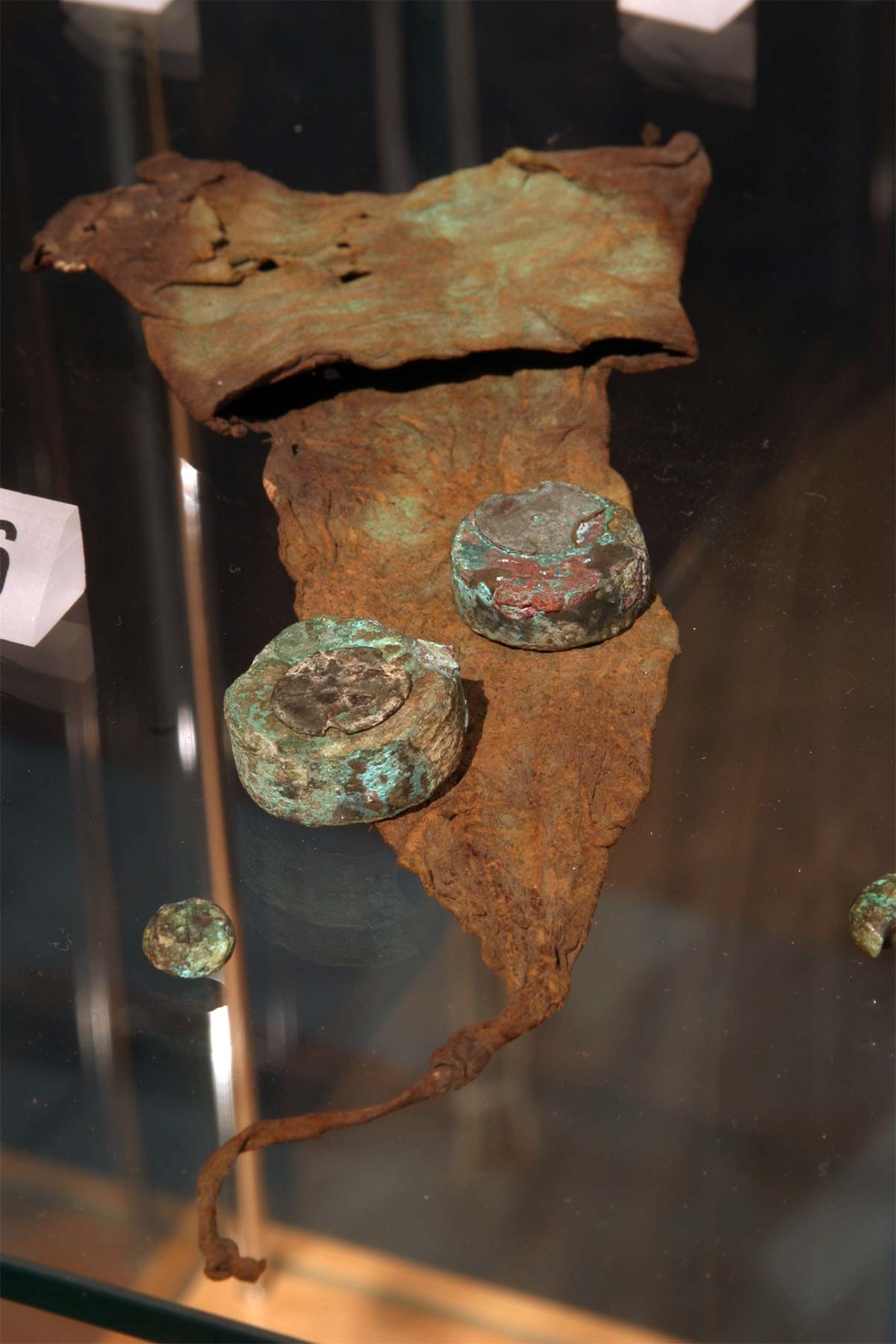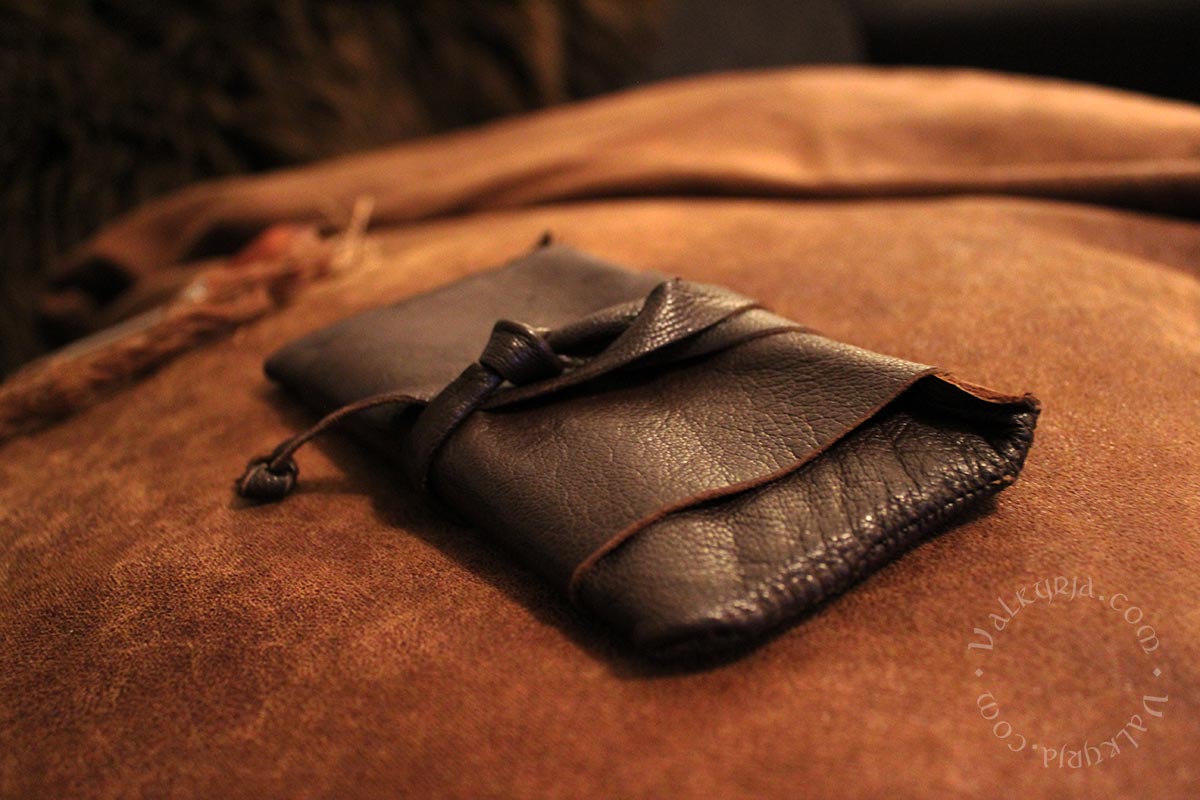|
|
||||||||||||
Someday during the early iron age, around year 475, a burial mound was being built at Eide, Gloppen, in Western-Norway. The man who was to be laid there, a powerful and wealthy person, had been dressed in the finest red and brown clothing, with the most extravagant details and colorful tablet woven trims. He was laid upon a bearskin on a bed of birch bark, and on his journey to the afterlife he would bring a rich amount of grave goods, fully equipped with weapons and a range of various belongings. There he would lay for many years to come, the large mound placed by the edge of the highland, easily visible for those passing by on the fjord. In year 1889, someone would come digging and brushing their way through the dirt, discovering what would become one of Norways larger, archological findings. Beside the man, who is now called the Eide or Evebø chieftain, there was a bronze scale, and a nifty little leather pouch containing seven weights of various sizes. Scales and weights are commonly found in graves from the Roman Iron Age throughout the Middle Ages. They were an important tool for the tradesman or woman, and would have been used for measuring valuables such as precious metals or spices. In the case of the Eide chieftain, it is also possible that they would have been used for legal purposes such as payment of weregild, overseen by a person of authority such as himself. The pouch is stored in my hometown at the Bergen Museum, as depicted below. 
(Photo credit: Arnybo@Flickr) A simple and straightforward piece in between all the riches, its recreation is ideal for someone who like me had never sown in leather before. So I've made my own Eide pouch, using what I had available, soft goatskin, hand sewn with linen thread. Perfect for keeping valuables at historical markets as well as anywhere else in the daily life of modern vikings. In addition to being darker in color, I've made mine more rectangular, to be a perfect fit for my phone and cards *cough* I mean, my coins and weights! 

The glass beads and bells are historical replicas of findings, I believe most of them are from Birka. Do you do any crafts based on historical sources? Sun and Moon Dance - Hagals hjerte
# Comments
|
 
|
|||||||||||
|
||||||||||||

